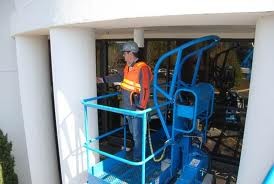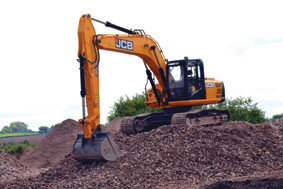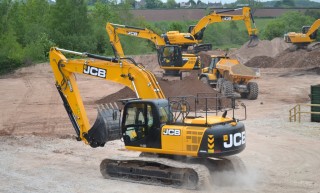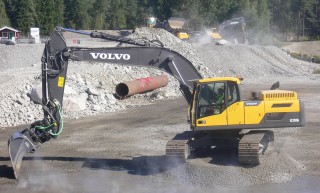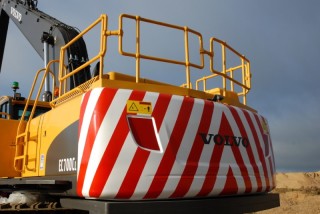It is commonplace these days for companies of all kinds to adopt position statements to the effect of ‘our people are our greatest asset, their safety and well-being is our number one priority and we will do whatever it takes to ensure they are protected in the workplace’.
But let’s be honest: such statements are mere rhetoric. A company can always do more to ensure safety but it would be ludicrous to wrap workers in so much cotton wool that they are unable to do their job. For the employer, the ‘number one priority’ is actually getting the job done and making money. Because with no money, there is no company and there are no employees.
What the good, ethical companies truly mean when they say ‘we will do whatever it takes’ is ‘we will do whatever is reasonably practicable’. We all operate within constraints of budget, time, physical space and technology. Compromise is part of life. The question is: what compromises are reasonable?
Many aspects of safety management, such as the requirement to wear a hard hat, are laid down by law. Others are more open to interpretation: you are allowed to use a ladder, but only after a risk assessment has concluded that it is okay to do so. Assessing the hierarchy of risk is a judgement call, informed by developing custom and practice.
When it comes to construction machinery, what is acceptable from a safety perspective, and what is considered necessary, is constantly changing.
A couple of generations ago, a crane operator would know from touch and feel that the machine was reaching its safe limits and starting to tip. After a particularly horrendous accident in north London in 1964, a requirement to fit safe load indicators was introduced. Today’s cranes have computer-controlled automatic limiters that cut out long before a lift reaches the danger zone. But it is not just about technology driving advancements. Some advances are made of simple steelwork. For example, today’s construction machines are required to have roll over protection systems (ROPS) and falling objects protection systems (FOPS). The previous generation of operators was simply told to be careful.
More recently, aerial work platform manufacturers have started to offer anti-entrapment devices, which are essentially steel cages to prevent the operator being crushed against overhead structures.
Manufacturers will happily tell you all about any new safety features on their machines but they are reluctant to engage in a conversation about what constitutes appropriate safety because they do not want to admit that they – just like the rest of the world – have to make compromises. For the marketing department, this might be corporate pride. For the legal department, it is commercial necessity. If someone is hurt in an accident that could have been prevented had the machine only been fitted with such-and-such a device, there will be hell to pay in the courts.
This is why the industry likes to move forward as one. The manufacturers generally control the standards bodies and can say what is reasonable and effective. The law-makers look to them as the expert authorities on what a safe machine should look like.
It is rare that a plant manufacturer will come forward, out of the blue, with a safety innovation fitted as standard across all of its machines. Usually, safety developments are the result of customer pressure. For example, the emergence of handrails on top of excavator upper works is a ground-up initiative. Even before the Work at Height regulations came into force, pioneering companies like Syncrude in Canada and the big mining companies in Australia had adopted policies to minimise the risks of operators, riggers and maintenance crew falling off big machines. Major international contractors began to follow suit and the plant hire firms that supply them have had to respond. The actual OEM is the fourth link in the chain and is not always quick to get the message.
In general, such measures are fitted as an optional extra and have not yet attained the status of a mandatory requirement. However, once they are available there is pressure on employers to fit them.

Handrails add safety but whether they are fitted usually depends on the customer
Crane manufacturers are now offering height safety systems as an optional extra. On many larger mobile cranes riggers are required to clamber on top of the boom to fit extensions and attachments. Previously, they simply had to tread carefully; now they have somewhere to tie the harness and lanyard. It is very difficult for equipment buyers not to specify them when buying a new machine; they have effectively become mandatory through custom and practice.
The whole debate about to what extent operators should be free to make their own health safety decisions gets raised every time some new innovation is discussed. Ultimately, we like having risk designed out. In our cars we now expect seat belts, ABS and airbags. This issue is currently topical following the recent experience of powered access hire firm Kimberly whose employee, Rick Jaeger-Fozard died last year when a brand new Genie Z-135/70 platform toppled over at the firm’s Iver depot.
The machine was fully compliant with all relevant standards and laws - totally legal - but subsequent investigations found that the machine’s boom angle sensors had been incorrectly calibrated. Kimberly’s view is that it would have been easy for the manufacturer to design out the possibility of human error in this case. It took independent advice and has now fitted an additional electro-mechanical safeguard its fleet of Z-135s. They were only put back into service in May 2014, having been stood down nearly a full year.
Manufacturers cannot totally design out the risk of all accidents. However far they go, it will always be possible to drop a spanner on your toe while changing a wheel. So should we just man-up and get on with it, accepting that machines are dangerous and should be treated with care and respect?
Or should we demand more from the OEMs?
So long as safety features are considered optional, the well-being of the workforce is patently not being put first
Got a story? Email news@theconstructionindex.co.uk

